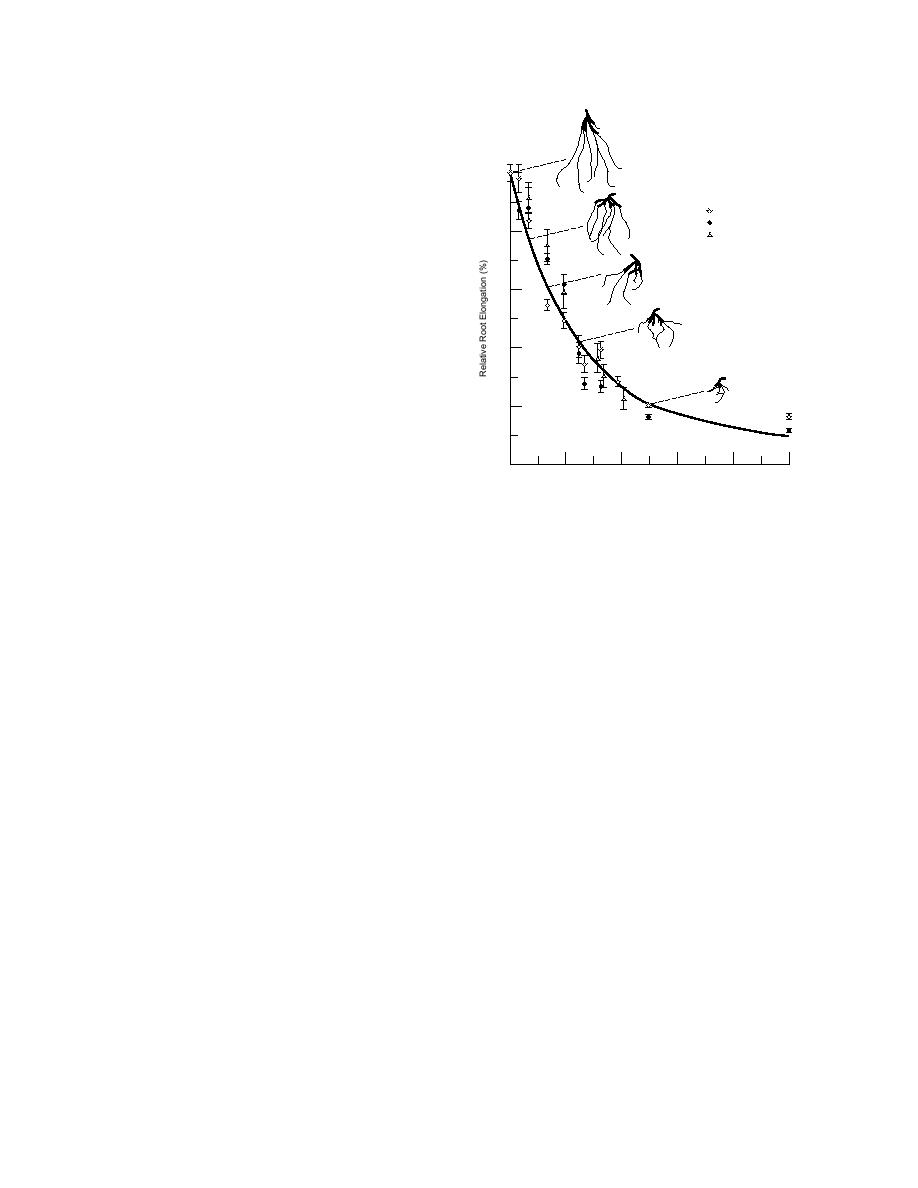
organs, and whole plants (Beauchamp and Lath-
well 1967). The number of lateral roots, distance
from a root tip to first visible lateral root, lateral
root density, root hairs, and root plagiotropism
100
(growth at angles from the vertical) are tempera-
Minimum Pore Diameter (m)
ture-sensitive (Atkin et al. 1973, Engels et al. 1992,
157
Mozafar and Oertli 1992).
69
80
16
Root dry weight is the most commonly mea-
sured parameter that follows a typical growth re-
sponse curve (Cooper 1973). Root length, surface
60
area, and extension of roots into deeper soil layers
are important parameters that influence water and
nutrient uptake. Present technology has the capa-
bility to measure these parameters. Root diameter
40
is another important parameter influenced by
temperature; it substantially reduces water and
nutrient uptake (Barber et al. 1989) as well as the
20
amount of carbohydrates required for root growth
(Fitter 1991).
Most plant growth models related to water and
nutrient transport require soil temperature with
0
20
40
60
80
100
Applied Pressure (kPa)
depth as input for the model. Temperature simula-
tion models published in the literature are
Figure 11. Effects of pressure applied to the outside sur-
1. Mechanistic models that need detailed initial
face of a flexible container on relative root elongation
and shape of barley roots (after Russell and Goss 1974).
and boundary inputs (Richtmeyer and Mor-
ton 1967, Wierenga and DeWit 1970, Hanks et
al. 1971, Rosema 1975, Van Bavel and Hillel
adverse physical impedances can severely affect
1976, Grant et al. 1990);
the plant's ability to emerge from crusted soils, to
2. Functional models that require weather sta-
extend its root system into unexplored soil vol-
tion information and soil information at one
umes, to transport photosynthates from shoots to
depth (Neild 1971, Hasfurther and Burman
roots, and to transport water from roots to shoots.
1974, Cruse et al. 1980, Gupta et al. 1984, Par-
These impedances restrict below-ground expansion
of root crops, e.g., turnip, sugar beet, or radish.
ton 1984, Brar and Unger 1994);
Under an excessive soil strength environment,
3. Statistical models of a regression type that
roots enter the soil volume where pore sizes are
were developed at a particular site from a
larger than the root tip. Conversely, if the pore
limited data set (Meikle and Treadway 1979,
sizes are too small for the entry of the main root
Ghuman and Lal 1983, Langholz 1989, Dwyer
but not for laterals, then laterals proliferate and
et al. 1990).
produce a highly branched root system (Russell
The timing of snowmelt and above-freezing
and Goss 1974). Furthermore, if the pore sizes are
temperatures are the major factors controlling the
too small and prevent entry of laterals, a stunted
onset of plant growth. Root elongation begins as
root system can result. Maximum pressures that
soon as the soil is thawed and elongation is possi-
roots can exert on the surrounding soil matrix
ble, depending on the depth of the individual root
range from 900 to 1500 kPa. Different species exert
tips.
different maximum root growth pressures (Taylor
1983). The impeded roots are thicker in diameter
Physical impedance
and distorted in shape (Fig. 11).
Physical impedance, sometimes called mechan-
Physical impedances result from
ical impedance or excessive soil strength, can se-
1. Natural consolidation during soil forming
verely affect normal root growth patterns. Such
processes;
impedances result from increased soil bulk densi-
2. Trampling by animals, including humans;
ty, increased cohesion between soil particles, in-
3. Natural shrinkage of soils upon drying;
creased friction between soil particles, reduction
4. Soil response to pressures and deformations
in soil water content, frost-heave action of soil, and
imposed by vehicle wheels;
presence of permafrost within the root zone. The
14



 Previous Page
Previous Page
